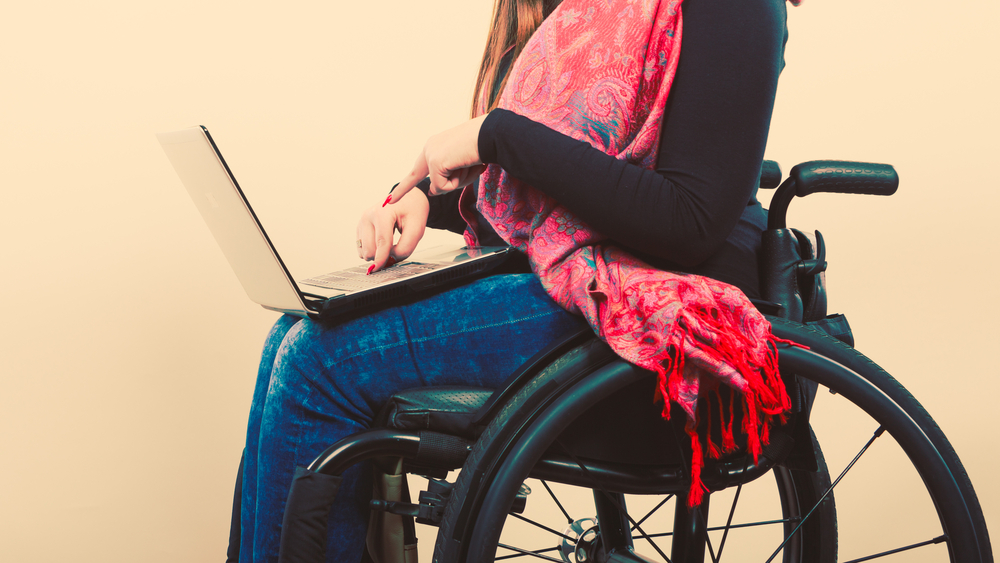How Technology Improves the Lives of People with Disabilities

With technology at our fingertips, being unplugged and off grid can seem like something that exists only in a fiction novel. New smartphones come out each year, cars have built-in wifi, and music and television can be accessed from our almost anywhere.
Just like everything in life, technology has its pros and its cons. On one hand it can be very helpful to people with disabilities, but on the other hand it’s believed that cell phone addiction is harder to detox from than cocaine, and that on average we check our phones a whopping 150 times per day. Yes, those facts are disturbing and make me wonder what the health-related consequences will be in the next few years, on top of the already existing health problems caused by overuse of technology.
But there also are positives to be noted.
To be honest, I’ve always had a love/hate relationship with technology. It can be frustrating having to call in to customer support because your phone isn’t working and waiting on hold for hours. But I can’t deny that technology contributes to a lot of positive things in my life. If I had been 20 years old and living with Mito about 10 years ago I would be forced to squash my extrovert personality and become an introvert.
Without the help of my back entry and wheelchair accessible van-friendless, I would have been stuck inside the house all day with nothing more than a My Space account to keep me connected to the world. I wouldn’t be able to write a letter, or call someone on the phone, because both take a considerable amount of energy. With the ease that comes with text messaging or scrolling through Facebook, I can easily discover what my friends are doing on a daily basis. Even services like Amazon.com that provide a customer with the ability to order groceries online and have them delivered to your door, makes a big difference in my and family’s lives.
Join our MD forums: an online community especially for patients with Muscular Atrophy.
A few years ago I read an insightful article about a man with ALS, and he described how his disease had progressed to the point to where he no longer had the use of his hands. He talked about how most technology such as smartphones, TVs and computers required the function of a person’s hand and/or fingers.
Even now, the talk-to-text function on our phones isn’t very well developed in terms of being completely hands-free. Stephen Hawking, the professor and theoretical physicist who lives with ALS, lost his ability to speak in 1985 when he caught pneumonia and had to have a tracheotomy procedure done. For a while he had his wife hold up spelling cards and he would select each letter by lifting an eyebrow, until he got the computer system called Equalizer that used a hand-held clicker to select words and letters.
Hawking’s speed to communicate increased greatly by 15 words per minute. As his ALS progressed, Hawking’s hand weakened and eventually he was unable to use the clicker. In 2013 he got upgraded to a new interface called ACAT (Assistive Contextually Aware Toolkit) that uses facial gesture recognition that allows him to select a letter by twitching a specific muscle in his face. With the help of an adaptive word-predictor software he can choose the word he wants, not unlike our smartphones. This new model gives him the ability to email, control the delivery time of his conversations, and even mute the speech synthesizer while he’s eating.
Without technology we wouldn’t be able to solve as many crimes or cure as many diseases. For people living with disabilities, technology actually improves our lives and keeps us connected with the outside world. It gives us back our mobility by helping us get from point A to point B, thanks to machines like electric wheelchairs and mechanical lifts.
It also gives us more opportunities to be independent, which is very important to someone with a disability.
***
Note: Muscular Dystrophy News is strictly a news and information website about the disease. It does not provide medical advice, diagnosis or treatment. This content is not intended to be a substitute for professional medical advice, diagnosis, or treatment. Always seek the advice of your physician or another qualified health provider with any questions you may have regarding a medical condition. Never disregard professional medical advice or delay in seeking it because of something you have read on this website. The opinions expressed in this column are not those of Muscular Dystrophy News or its parent company, Bionews Services, and are intended to spark discussion about issues pertaining to muscular dystrophy.







Leave a comment
Fill in the required fields to post. Your email address will not be published.